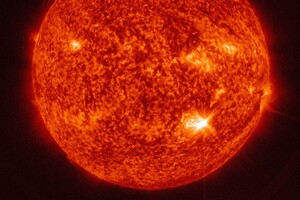The flare was accompanied by a coronal mass ejection that passed the Earth.

The solar flare, which was a surprise for scientists, led to temporary disruptions to radio communications in New Zealand and Australia. According to Live Science, the flash came from a region of dense magnetism on the Sun's surface.
It was registered by NASA's Solar Dynamics Observatory on Sunday, November 6. The flare came from sunspot AR3141. According to the space weather tracking site Spaceweather, the flare caused a release of radiation that ionized the Earth's atmosphere.
Also read: ESA's apparatus approached the Sun and transmitted new images to Earth
Sunspots are dark regions on the Sun's surface in which powerful magnetic fields created by the flow of electric charges tie into knots before suddenly breaking apart. The release of energy results in bursts of radiation called solar flares and explosive jets of solar material called coronal mass ejections (CMEs). A coronal emission accompanied this flare as well, but it passed by the Earth.
The appearance of the flare was a surprise for scientists. Researchers divide flares into five classes: A, B, C, M and X, the last of which are the strongest. The recorded flare was classified as M5.
After reaching the Earth, X-rays and ultraviolet radiation created by solar flares ionize atoms in the upper atmosphere, making it impossible to reflect high-frequency radio waves from them and leading to a shutdown of radio communication. Radio blackouts occur over areas illuminated by the sun during a flare and are classified from R1 to R5 depending on severity. This flare caused a moderate R2 blackout.
Related video
Scientists cannot always predict what happens on the Sun. So, on September 27, the Earth was covered by a magnetic storm, which was a surprise for scientists, since no geomagnetic disturbances were expected on that day.




